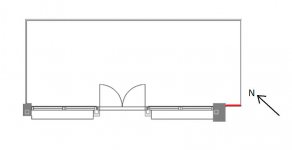looksharp65
Well-known member

I'm moving to a new apartment in a few months. It has a glass enclosed balcony with possibility to remove panes, but still enjoy freedom from vibrations caused by wind. I will see a 40 degree slice of the sea towards south, but most of the view is panoramic towards east and the hinterland.
There are good chances to see migratory seabirds like Eiders, and most likely Northern Gannets, Skuas and such when it's stormy.
Height above the sea would be in the 45-50 m range.
Provided that sufficient aperture could allow for an 1,5 mm exit pupil, and almost no aperture limits applied, which magnification would hit the ceiling with regard to atmospheric conditions?
I could never afford a 14 inch reflector, but is there a chance to reach >200x magnification or will non-optical conditions make it useless?
This is a thought experiment and I'm not ruminating a new purchase round.
Yet. o
Thanks in advance!
//L
There are good chances to see migratory seabirds like Eiders, and most likely Northern Gannets, Skuas and such when it's stormy.
Height above the sea would be in the 45-50 m range.
Provided that sufficient aperture could allow for an 1,5 mm exit pupil, and almost no aperture limits applied, which magnification would hit the ceiling with regard to atmospheric conditions?
I could never afford a 14 inch reflector, but is there a chance to reach >200x magnification or will non-optical conditions make it useless?
This is a thought experiment and I'm not ruminating a new purchase round.
Yet. o
Thanks in advance!
//L





